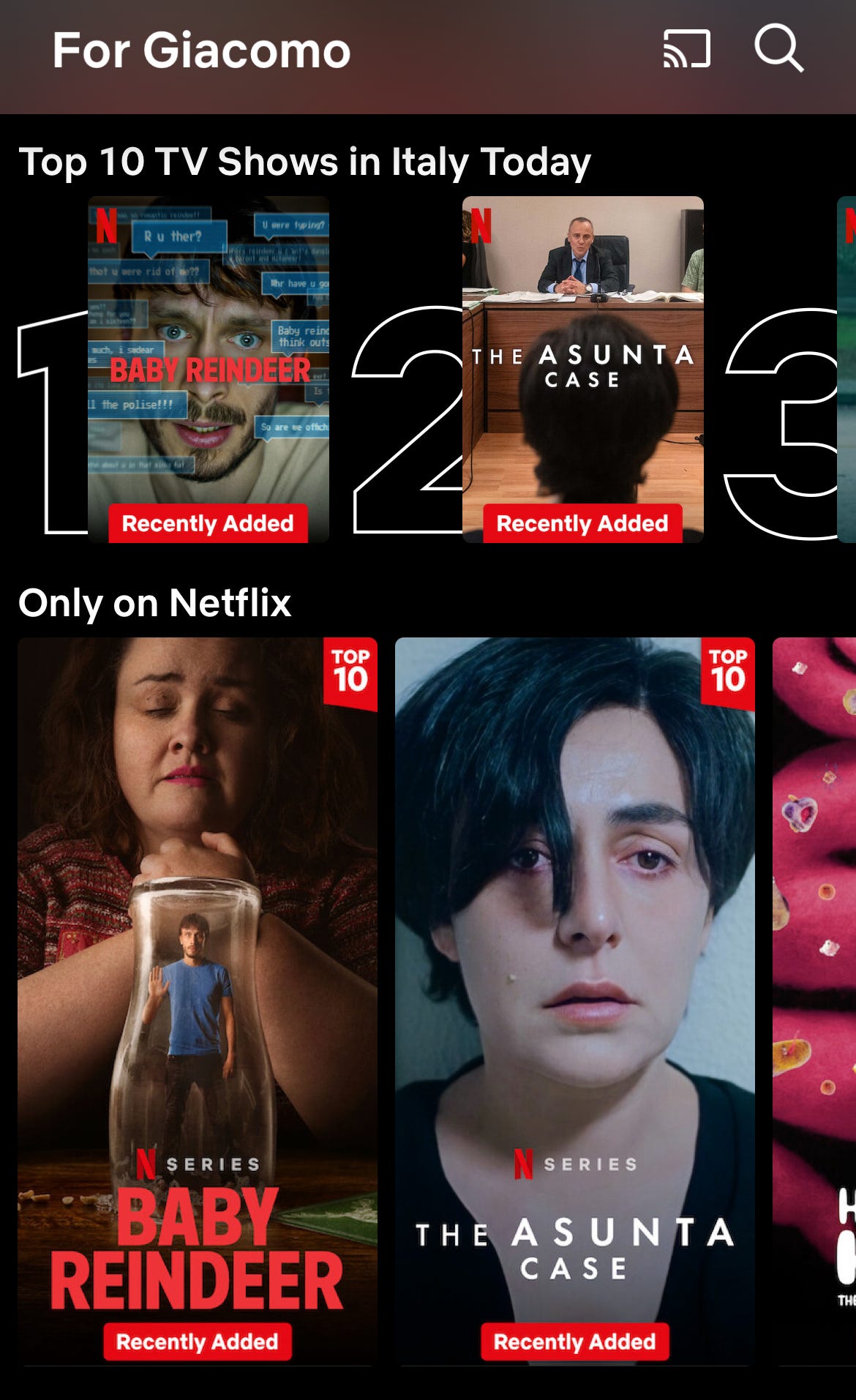How to Sell and Influence People
From theory to practice: discover how Amazon, Netflix, Justin Welsh, and others are influencing user behavior
📝 Words: 1,315 | 🕰️ Estimated Reading time: about 6 mins
TL;DR
💡 Robert Cialdini and the influence of persuasion: how hotels can influence its guests using one of my favorite psychological effects.
🧑🔬 From theory to practice: real-life examples of social proof and how Amazon, Netflix and other companies use it to influence consumer behavior.
📩 My recent experience with social proof growing this newsletter.
I have always wanted to write about one of my favorite psychological effects, popularized by Professor of Psychology and Marketing Robert Cialdini in his book “Influence: The Psychology of Persuasion”.
This effect can be seen everywhere, from e-commerce to offline businesses, and it is a fundamental principle of the science of persuasion.
The master key to sell anything with extraordinary ease.
🥁 🥁 🥁
➡️ Social Proof ⬅️
Social proof is a psychological and social effect where we tend to make decisions based on the actions and opinions of others.
When we are uncertain about a course of action, we tend to look to others to guide our decisions and actions.
And copying what other people have done is an easy way to make safe choices.
🧑🔬 The early experiments 🧑🔬
One of the first experiments on social proof was conducted in the 1950s by Solomon Asch, a pioneer of social psychology famous for his “conformity” experiments.
👁️ In the experiment, 50 people were invited to participate in a vision test.
The participants did not know they were surrounded by seven “actors”, posing as fellow participants.
The group was gathered in a classroom and each person was shown a picture of a target line and three comparison lines (A, B and C) and asked which line was most similar in length to the target line.
The group was seated in such a way that the actors responded first, leaving the real participants to respond last.
Although the correct answer was always obvious, the actors had been instructed beforehand to give the wrong answer.
Now the real participants could either (i) ignore the majority (and give the correct answer) or (ii) ignore the truth (and go with the wrong answer).
The results?1
✅ 23% of participants always gave the right answers.
❌ 72% conformed to the wrong majority at least once
❌❌ 5% always gave the wrong answers
But it wasn’t until 1980s that the term “social proof” became popular, when Robert Cialdini coined it in his book Influence: The Psychology of Persuasion.
🧑🔬 Cialdini and a team of colleagues ran an experiment to see which types of signs would most encourage hotel visitors to reuse towels during their stay.
🌳 When the sign mentioned environmental reasons, 38% of visitors reused towels.
👨👩🧑 When the sign said that the majority of guests reused their towels at least once, 48% of visitors reused towels.
When guests knew that most people who stayed in the same hotel reused their towels, they were more likely to comply with the request, and at zero cost for the hotel.
The book is now one of the pivotal texts of marketing, and social proof has become widely studied to understand how to influence consumer behavior.
How?
Need some real-life examples?
Let’s go!
⭐Amazon | Leveraging customer reviews⭐
Amazon uses customer reviews for its products, with star ratings and written or video reviews. In this way the experience for other visitors feels more authentic and trustworthy.
Similarly, “People Who Bought This, Also Bought…” recommendations serve the same function of building customer trust by leveraging social proof.
🍿Netflix | What other people are watching🍿
Instead of spending hours deciding what to watch, Netflix users can view what others are watching by using the “Popular on Netflix” tab.
The “wisdom of the crowd” creates perfect FOMO (i.e. fear of missing out) for the users, who need to watch what others are also watching not to feel excluded.
I always fall for this.
💸🥑Satispay and Too Good To Go | Showing proof of usage🥑💸
Showcasing the number of users that have already downloaded your app is an excellent example of using social proof to influence non-customers become customers.
Satispay is using this marvelously.
If you go on their website, the first thing you see - before even understanding what they do - is a live counter of the number of people currently using Satispay.
If you’re not among them, you can’t help but think “I must be missing something big”.
Similarly, Too Good To Go is showing the number of users, the number of businesses on the platform, and the number of surprise bags saved so far.
For a two-sided marketplace like Too Good To Go, it is key to use social proof to ignite a virtuous cycle for both the end-users and new potential partners.
By knowing that millions are ordering on the app, existing users are incentivized to order and save more, while new users are encouraged to join the platform.
Businesses (restaurants and grocers) not currently on the platform will see that thousands of others have already joined, and decide to join too.
🚀Justin Welsh | Using testimonials and endorsements to support product launches🚀
Companies rely on experts’ reviews (e.g. toothpaste brands being recommended by dentists), case studies (e.g showing how your product has helped former clients), or awards and recognitions to give their brands authority and influence customers in their decision-making process.
When Justin Welsh launched “The Creator MBA”, he used authoritative testimonials on his homepage to leverage social proof and build trust for the launch.
This is particularly relevant for services, where the thing to sell is intangible and customers are unable to judge the quality prior to buying it.
Having industry thought leaders, influencers, celebrities or user testimonials endorsing your services is a vote of confidence in its value.
And for Justin Welsh - who is already famous in his own rights - having four prominent “Internet” CEOs endorse his latest product gives additional credibility to his launch.
We make a lot of our decisions based on feelings, rather than sitting down and thinking about it for hours and hours.
And social proof is a key element of how businesses communicate, because it helps potential customers choose who and what to trust, especially online.
If you work in marketing or in sales, social proof should be your close friend.
And you don’t even need to be a Director or a VP to start making a difference.
For example, as a CRM associate you could improve the copy of all marketing properties and use social proof as a way to increase conversions on e-mails, push campaigns and in-app messages.
If you are a BDR/SDR, you should mention testimonials, case studies or your company’s latest award to close the sale.
As long as social proof is genuine (avoid fake reviews) and relevant (to your product or service), it will 100% drive more conversions.
How do I know?
Well - other than seeing this happening many times in my corporate experience - I recently experienced it myself.
A little more than 2 weeks ago I launched this newsletter, and the first subscribers were close friends and former colleagues.
However, last week I shared on LinkedIn that “Getting Better” had surpassed the milestone of 100 subscribers (🎉🎉🎉).
Despite that LinkedIn post performed below average in terms of impressions, it immediately drove 19 new subscribers (which is an increase of 19%).
How did this happen?
Social proof was at play.
People saw that more than 100 people had already subscribed, so they assumed “Getting Better” must be worth subscribing too.
I gained trust by showing that enough people had subscribed.
And 100 subscribers felt like a good number for a recently launched newsletter.
How did I reach 100 subscribers quickly?
Well, that can be the topic for another post.
See you next Sunday 🗓️
Thanks,
Giacomo












Good one. Would love to grow my fair share of network as well. Restacking!
Wanting to be like others is a strong incentive for a person to change.